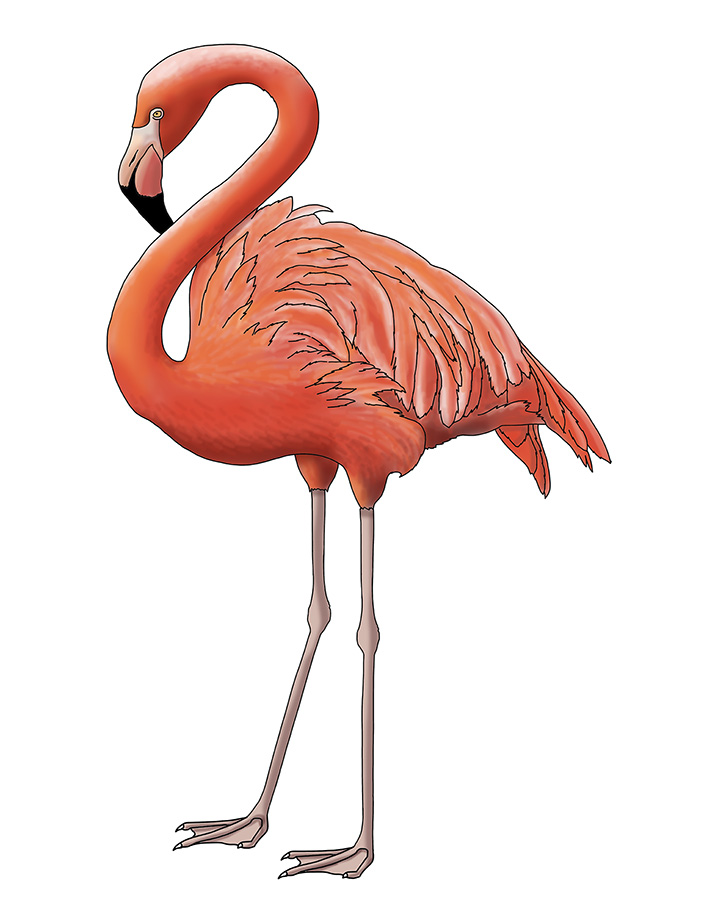

They are found in southern Florida, the Caribbean, the Yucatan Peninsula of Mexico, Central America, Northeastern South America and on the Galapagos Islands.
They live in shallow ocean lagoons in tropical and subtropical regions.
They have oval-shaped, pink bodies with darker pink wings. The tips of their wings are black. They have long, pink legs and a long neck. They have a large bill that curves downward, pink on top and black at the tip. It is unusual in that the lower part of the bill is larger.
They gather in large flocks. They fly with their necks and legs held straight out. They have a honking call.
They feed with their heads upside down in the water, sweeping their bill from side to side, stirring up the water to get to food and suck it in. They have a jagged edge on the bill that acts like a filter letting water with snails, shrimp and insects in. Then their tongue pushes the water out and they swallow the food.
The female lays one white egg on a mound of mud, rocks and shells more than a foot tall. Both parents care for the chick. The whole flock nests in the same area and parents will watch other young so they can take turns feeding.
Related Activities:
Learn to Draw a Flamingo
Flamingo Coloring Page
Domain: Eukarya
Kingdom: Animalia
Phylum: Chordata
Subphylum: Vetebrata
Class: Aves
Order: Phoenicopteriformes
Family: Phoenicopteridae
Genus: Phoenicopterus
Species: P. ruber
When you research information you must cite the reference. Citing for websites is different from citing from books, magazines and periodicals. The style of citing shown here is from the MLA Style Citations (Modern Language Association).
When citing a WEBSITE the general format is as follows.
Author Last Name, First Name(s). "Title: Subtitle of Part of Web Page, if appropriate." Title: Subtitle: Section of Page if appropriate. Sponsoring/Publishing Agency, If Given. Additional significant descriptive information. Date of Electronic Publication or other Date, such as Last Updated. Day Month Year of access < URL >.
Amsel, Sheri. "Flamingo" Exploring Nature Educational Resource ©2005-2024. December 14, 2024
< http://www.exploringnature.org/db/view/Flamingo >

